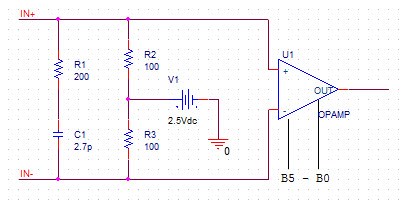Other Parts Discussed in Thread: TINA-TI,
Tool/software: TINA-TI or Spice Models
I noticed a few distinctions where the simulation result of the spice model in ADS does not meet the curves in the datasheet.
I would like to get clarified which one is more close to reality.
If it is the model that is inaccurate, my major concern is maybe I make wrong design choice when running simulation with the model in the design phase.
I would first like to get the doubts clarified and would appreciate it if the model can get closer to reality.
The model in this test is LMH6521. The datasheet I am referring is version: SNOSB47E –MAY 2011–REVISED AUGUST 2016
Below are the distinctions observed:
1. S11 versus attenuation setting:
It would seem that the input attenuator of the device is a passive network. If this is true, S11, i.e. reflection, should get better with increased attenuator setting. However, this is not what is observed in the model.
ADS simulation curves with the spice model:
S11 at MAX gain setting, together with S21
S11 at MIN gain setting, together with S21
The change of gain setting is observable from S21. In the two situation, S11 makes no difference, i.e. smaller reflection is not observed at higher attenuation setting. This raises the question whether the input impedance is properly modeled.
2. Large distinction in gain curve at low gain setting
Below are the simulation gain curves at MAX and MIN gain settings. As can be seen, the curve has the same shape in either cases.
Meanwhile, below is the gain curves versus attenuation setting in the datasheet. There is clearly a peak just before the gain drops, which becomes more obvious in low gain settings. Although it is not a direct interest to know the gain curve in the settings that gain is smaller than 0 dB. I think this phenomenon underlies that the model missed a few poles and zeroes in the frequency of interest compared to the device. I would like to get a bit more clarification on that, such as whether they are internal or at the output stage and then assess the impact on the design.






